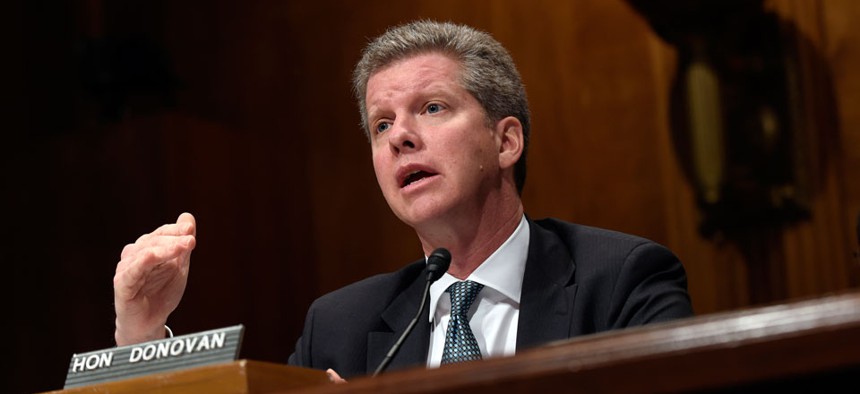Lawmakers Skeptical of Digital Service Funding Boost

Office of Management and Budget Director Shaun Donovan Susan Walsh/AP
Some House Republicans appeared to balk at the price tag for scaling up the Digital Service’s White House headquarters.
The White House says the small team of tech fixers at the U.S. Digital Service working in pilot mode has already saved the federal government millions of dollars.
But when a top administration official appeared before a House subcommittee this week to ask for additional funding to help scale up the project, some lawmakers appeared to balk at the price tag.
The Office of Management and Budget has requested about $35 million -- of a total budget of about $97 million -- for its “information technology oversight and reform” activities, known as ITOR. A sizable chunk of that proposed funding would help boost staffing within the Digital Service’s White House headquarters, OMB Director Shaun Donovan told members of the House Appropriations subcommittee on financial services and general government.
Current ITOR funding is about $20 million.
"That's a pretty big increase," said Rep. Ander Crenshaw, R-Fla., the subcommittee chairman, during a hearing March 16. "It might be difficult for us to, maybe, provide you those funds. But it's clear just spending more money -- you know, we all agree -- doesn't solve the problems."
Crenshaw cited a recent report from the International Association of Information Technology Asset Managers, which argued poor IT management -- not inadequate funding -- causes so many government IT projects to crash and burn.
However, Donovan said the funding bump is “justified,” because digital service efforts have also led to big costs savings.
He cited the work of three Digital Service staffers who aided the Department of Veterans on a veteran employment project. In the span of just three months and a cost of $175,000, the team completed a project for which VA had expected to spend $25 million over the course of many years, Donovan testified.
“We've been able to attract some remarkably talented engineers from Google and Facebook and a range of other leading-edge technology companies to come in for a couple years to government service, and they are already dramatically improving the quality of the service that we provide,” he said.
Since 2012 when OMB’s IT oversight fund was created, agencies have saved some $2.5 billion, Donovan said. Activities supported by the fund include PortfolioStat sessions, which are line-by-line reviews of agencies’ IT investments; closing down inefficient data centers; and expediting the move to cloud computing.
“By most accounts, the administration has done a pretty good job -- you've had some successes,” Crenshaw acknowledged.
But he appeared skeptical the office’s planned staffing increases -- which he pinned at 71 new hires -- were truly necessary.
"If you're finding these bright, smart folks that can come in, then do you really need all that many people?” Crenshaw said. “If you can find bright, smart people, then that might be better than having a whole lot of people that aren't as bright and smart as that handful that you're looking for."
Donovan said the majority of new hires would onboard for short-term work -- about two years.
“The demand has surprised even us, and this is why we felt like we needed to jump on it, because we've been able to do extensive recruiting and to really get fantastic talent from tech companies,” Donovan said. “This felt like an opportunity to scale it up quickly, because of the interest that we're seeing."
Overall, the federal budget calls for spending $105 million -- spread across agencies -- to stand up digital service teams at the 25 largest agencies. That would eventually swell the ranks of digital staffers governmentwide to more than 500.


